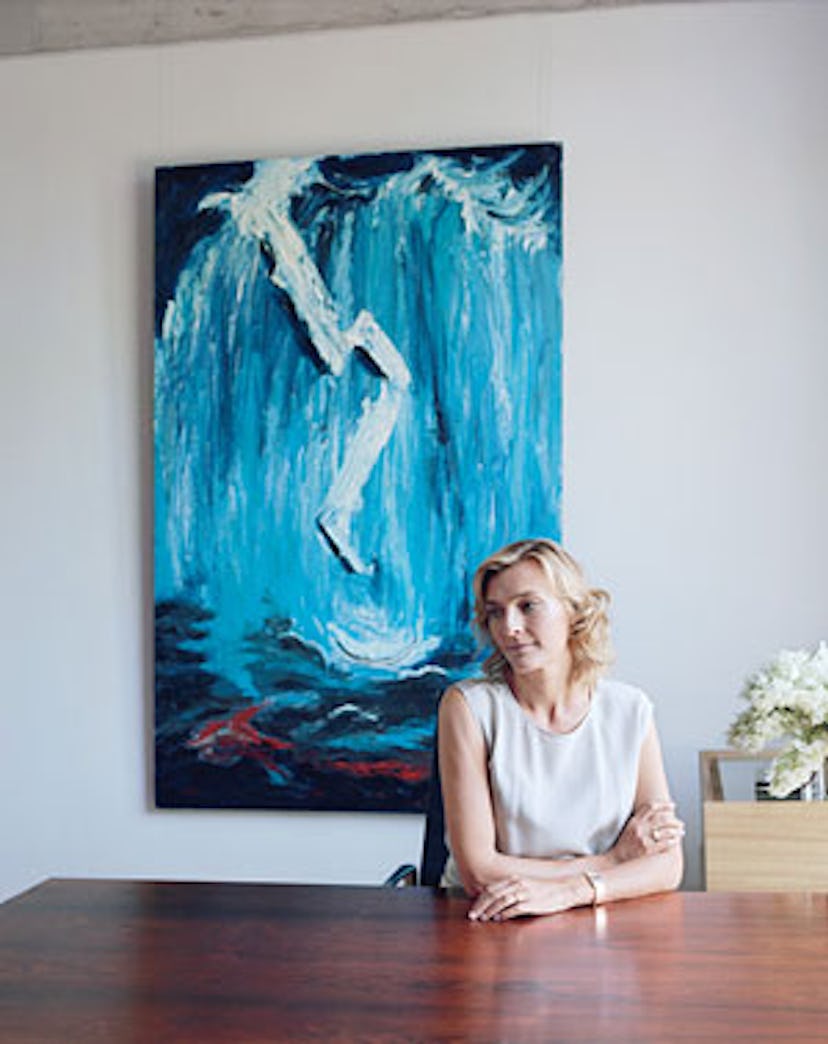Family Style

For most newlyweds, moving in with the in-laws would be a nightmare, but in Nicola Maramotti’s case, the scenario had a very happy ending. For one thing, her husband’s family, among the wealthiest and most private in Italian fashion, live in a 1,000-year-old castle. For another, during her stay under their roof, Maramotti not only entered the family but also joined the family business, MaxMara.
Born and raised in Hamburg, Germany, Nicola met her future husband, Ignazio Maramotti, in New York when both were working there after college. The couple moved to the northern Italian town of Reggio Emilia, home base of the MaxMara empire, just prior to their 1993 wedding. “Our little apartment wasn’t ready yet when we arrived,” recalls Maramotti over lunch in West Hollywood. A willow-thin blond, she has wide-set amber eyes and speaks in a serene voice lightly seasoned by a German accent. “So we moved into the castello of his parents for a while.”
Within a few days, Nicola’s future father-in-law, Achille Maramotti—the company founder who is widely credited with introducing ready-to-wear to Italian fashion in 1951—noticed that she was restless without anything to do and so invited her to visit MaxMara headquarters. “That was the first day I stepped foot in the company,” says Nicola, who was soon charged with helping open a Milan flagship for the brand’s secondary line, Max & Co., “and I never left.”
Today Maramotti scouts new store locations across Europe for MaxMara’s various labels, which also include SportMax and Marina Rinaldi. It’s no small task for a company that deeply believes in opening new stores—almost 2,300 in 90 countries to date, generating $1.8 billion in annual sales.
Maramotti also periodically steps forward as the public face of the company, and it’s just such an occasion that recently brought her to Los Angeles to attend the annual Women in Film gala, a fundraiser for the powerhouse Hollywood charity that supports young talent with mentorship and scholarship programs. Maramotti was on hand to bestow this year’s MaxMara Face of the Future Award to Ginnifer Goodwin. (Past winners include Emily Blunt and Maria Bello.) “It’s still quite hard for women to succeed in Hollywood,” says Maramotti, when asked why MaxMara chose to throw its support behind the charity, “and this is how we would like to help.”
Maramotti is equally involved with the MaxMara Art Prize for Women, a biannual award that goes to a young artist selected by London’s Whitechapel gallery and provides an all-expenses-paid six-month residency in Italy.
Margaret Salmon, the first recipient in 2006, calls the residency “more important, really, than money,” since it gave her full immersion into Italy’s rich cultural scene and the necessary production support from Whitechapel to respond to it in her own work. “I was spoiled,” recalls Salmon, who created a film triptych during her time abroad. “I was also very impressed with the Maramotti family. I found them very down-to-earth and engaged.”
The award is a natural outgrowth of the family’s longtime interest in art. Achille began collecting early in his career, befriending artists of the Arte Povera movement and buying directly from their studios. He continued until his death in 2005, amassing work by Francis Bacon, Piero Manzoni, Alex Katz, Vito Acconci, Ellen Gallagher and Eric Fischl. These days it’s Nicola and Ignazio who add to the collection, often shopping at Art Basel and London’s Frieze.
Still, the couple prefers to keep a low profile, even at such scene-y events. Most people in the art world—or even the fashion world, for that matter—wouldn’t recognize the Maramotti name, and that’s just how they like it. “My family has always had the idea that it does not want to promote one public face,” says Maramotti, noting that while Karl Lagerfeld, Narciso Rodriguez, and Proenza Schouler’s Lazaro Hernandez and Jack McCollough all designed for MaxMara early in their careers, they did so anonymously. “That’s also why many people don’t know us as a family. They know our product. I think it’s quite sane to work that way.”
Photo: Thierry Mugler/WWD Archive